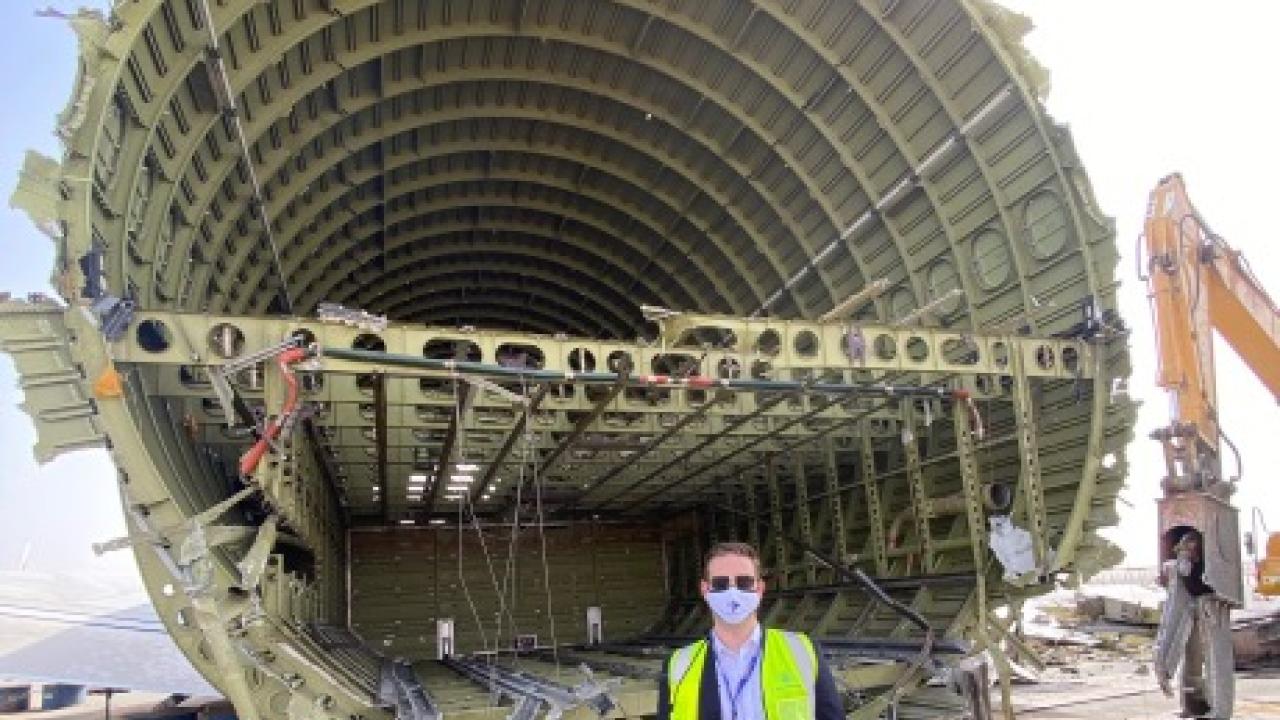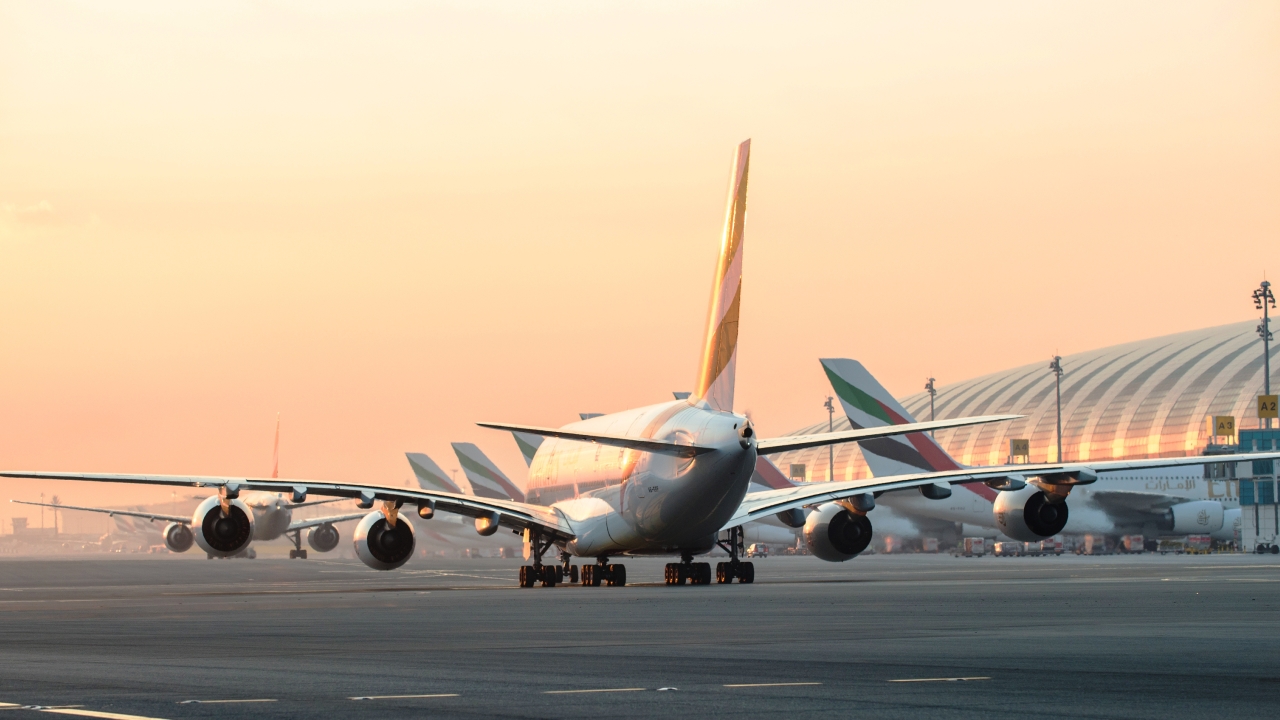UAE set to show its scrap mettle

Going under cover: Sven Daniel Koechler and his staff plan to be operating within their own premises, rather than dismantling aircraft outside, such as this McDonnell Douglas MD-11. Picture ASME.
It’s one of the less attractive aspects of several airports in the Middle East: old aircraft, long abandoned by their owners, slowly rusting away in remote corners, subsiding gently into the sand as their tyres disintegrate.
Many of these wrecks could disappear in the next few years, with a company planning to set up an aircraft recycling facility in the Gulf.
Aircraft Solutions Middle East (ASME) is well along the road to setting up what it says will be the world’s largest aircraft recycling plant, at Al Ain International Airport, Abu Dhabi.
“We have the design ready and we have a land proposal from the airport,” said ASME CEO Sven Daniel Koechler.
Finalising the finances is the remaining piece of the jigsaw. Koechler believes there is “a fair chance” that construction will start this year and hopes the plant will be operational a year later.
ASME’s plans involve building what Koechler described as the largest hangar in the UAE, measuring 300 metres x 100 metres x 42 metres. This will be capable of accommodating up to three Airbus A380s side-by-side.
Using modern techniques will mean the site will be able to dismantle 70 aircraft a year, making it the world’ largest facility of its type. The size of the proposed hangar means that aircraft will be able to be moved straight inside: “We don’t intend to have a ‘boneyard’,” said Koechler.
ASME’s planned site is within the boundaries of Al Ain International Airport. One attraction of the site is that it is a free zone; another is that the airport handles both civil and military aircraft and ASME intends to dismantle both types.
At present, Ras Al Khaimah-based ASME is working on outdoor sites in the UAE, but the planned new facility would allow it to work on aircraft regardless of weather conditions.
“There are a lot of dead and abandoned aircraft at the end of runways,” noted Koechler. “There are 22 at Ras Al Khaimah and 28 or 29 at Fujairah. Most are Russian or African.” Typically, their owners have been unable to pay airport fees, or maintenance and overhaul charges, and walked away from them.
Often, said Koechler, the abandoned aircraft are auctioned off: “Some smart people think they will buy three to use the spare parts from two to make one flyable.” They fail to realise that they will have to pay the aircraft’s often substantial parking fees and lose interest, at which point the aircraft go for auction again.
ASME also aims to help the governments of Ras Al Khaimah and Fujairah by removing the hulks at their respective airports, even if the cost of cutting them up outweighs their scrap value, as they are becoming an environmental hazard, with considerable quantities of liquids, such as air conditioning and hydraulic fluids, on board. Some elderly types also have uranium counterweights on board.
ASME describes itself as ‘a provider of sustainable, end-to-end recycling solutions’. The company is applying a new business model that recognises the entire value of redundant aircraft, with high-value components such as engines, electronics, landing gear, and avionics being removed, tested and recertified by engineers and technicians to be re-sold, or otherwise repurposed in other aircraft.
Metals such as aluminium, copper, and various alloys are returned to their original state and put back into the supply chain.
Interior materials such as plastics, leather, and even single-use items, are harvested and processed, with the aim of producing new products and, ideally, creating zero waste.
For example, ASME has sold leather from seats on an ex-Lufthansa aircraft to a specialist company that customises Nike Air sports shoes, creating limited-edition versions for consumers who like the idea of having materials on their feet that previously flew around the world.
Windows can be upcycled into new wall clocks and exit doors into coffee tables: “There are a lot of aviation enthusiasts who want to have these special parts,” said Koechler.
Valuable: Materials can be extracted from aircraft, such as this MD-11 currently being dismantled and recycled. Picture: ASME.
ASME employs 36 staff at present, but this is likely to rise to 350-400 when the new facility is fully operational. Staff will be a mix of engineers to run the site, plus blue-collar workers to handle the dismantling.
As part of its plan to offer services throughout the life of an aircraft, ASME intends to set up an MRO facility alongside the dismantling plant.
Employing the latest techniques should allow an airliner to be disposed of in 30 days, around one-third of the time taken by rivals, said Koechler, who foresees the annual number of airliners going for recycling doubling over the next decade.
At the time of writing, ASME was completing the dismantling of a McDonnell Douglas MD-11 at Dubai World Central (DWC).
New processes mean that ASME will be able to recycle almost every part of an aircraft. “We’ve been able to recycle 98.5% of that MD-11. That’s way more than our competitors,” said Koechler.
Achieving this level of recycling lies in the company’s ability to segregate materials, particularly plastic, more effectively, he added.
For example, passenger service units (PSUs) – the panels above passengers’ seats containing air vents and call buttons – can contain five or six different types of plastics. Perhaps surprisingly, the aircraft manufacturers often don’t know precisely what types of plastics are used, as they are sourced from component suppliers who, in turn, receive the PSUs’ constituent parts from subcontractors.
DWC is being held in reserve as a back-up plan if, for some reason, the Al Ain site does not go ahead. “In a perfect world we will go to Al Ain,” Koechler said. “But we all know aviation is not a perfect world.”
• The Moroccan Airports Authority (ONDA) is planning to establish an aircraft storage, dismantling and recycling site near Oujda-Angads Airport. It has launched an international call for tenders to select a partner or a group to design, build and operate the site.
Alan Dron reports.
Stay up to date
Subscribe to the free Times Aerospace newsletter and receive the latest content every week. We'll never share your email address.

